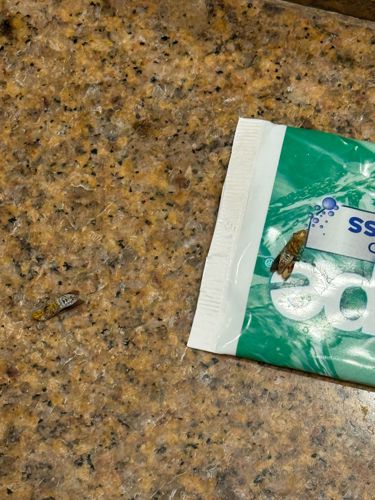Casebearer Moth (likely a household casebearer or tapestry moth)
Scientific Name: Tineidae species (e.g., Phereoeca uterella for Household Casebearer, Tinea pellionella for Case-making Clothes Moth)
Order & Family: Lepidoptera (Moths and Butterflies), Tineidae (Fungus Moths)
Size: Larvae can be up to 10-15 mm (0.4-0.6 inches) in length, while adults typically have a wingspan of 10-14 mm (0.4-0.55 inches).

Natural Habitat
Indoor environments, particularly areas with natural fibers like carpets, closets, attics, and undisturbed storage areas. They prefer dark, undisturbed places.
Diet & Feeding
Larvae of these moths feed on a variety of organic materials, including wool, hair, felt, fur, feathers, and lint. They are often found in homes consuming natural fibers in carpets, clothing, and upholstered furniture.
Behavior Patterns
Casebearer moths are known for their larvae building and carrying a portable case made of silk and debris. They usually feed within this case, extending their head and legs to munch on their food source. Adults are short-lived and typically do not feed, focusing solely on reproduction.
Risks & Benefits
Potential risks: They are considered household pests due to their destructive feeding habits on natural fibers, leading to damage to clothing, carpets, and other textiles. They do not pose direct health risks to humans. Potential benefits: None significant in a human-dominated indoor environment; in nature, some tineids play a role in decomposition.
Identified on: 8/22/2025